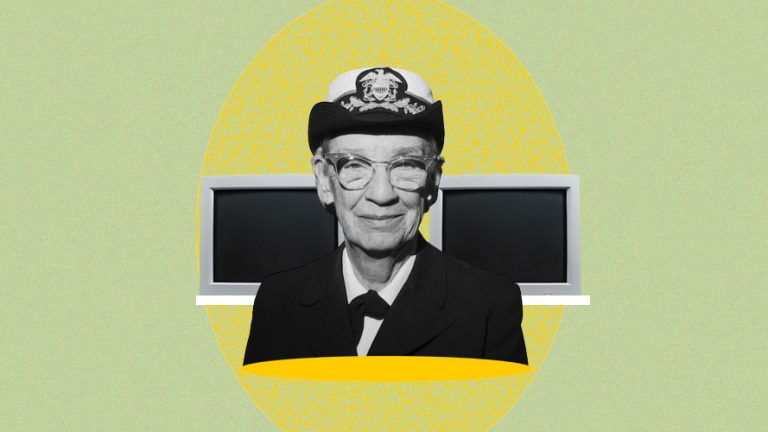Grace Hopper, the “Mother of COBOL,” the one who transformed the field of computer science
Few individuals in the enormous field of computer science are as well-known as Grace Brewster Murray Hopper, a trailblazing mathematician and navy commander. Hopper, frequently referred to as the “Mother of COBOL,” made revolutionary computer advances and still inspires many. Her narrative is one of tenacity, inventiveness, and a tireless quest for advancement. But what really cements her place in history is the innovative programming language she invented.
The acronym COBOL, “Common Business-Oriented Language,” revolutionized how computers were programmed and began a paradigm shift that made technology more widely accessible and accelerated the digital revolution. This is the compelling story of Grace Hopper and the programming language that has permanently changed computers.
Grace Hopper, born in New York City on December 9, 1906, showed outstanding intelligence from a young age. She obtained her Ph.D. in mathematics from Yale University in 1934, making history as one of the few women to do so at the time. Hopper’s aptitude for mathematics inspired her to enlist in the American Naval Reserve during World War II. She was tasked to work on the Harvard University Mark I computer, a sizable electromechanical device used for calculations about wartime activities.
Hopper first became aware of the limits of the current programming languages as a student at Harvard. These languages were highly specialized and required a depth of understanding to use. Hopper envisioned a more user-friendly programming language allowing non-experts to use computers efficiently. This idea helped to create COBOL.
Early in the 1950s, Hopper joined a group that created the first compiler, a program that converts code humans can read into instructions that machines can read. This innovation made it possible for programmers to write code in a more intuitive and natural way. In 1959, Hopper’s group produced the original version of COBOL. The language was created with a broader audience in mind, making it simple for both programmers and businesspeople to understand.
By introducing English-like syntax and standardized commands, COBOL revolutionized programming. It was the first high-level programming language with a business application-focused approach, enabling the creation of intricate software systems. COBOL’s ease of use and readability changed the game by allowing programmers to write code more quickly and reducing the time needed for software development.
It is impossible to exaggerate COBOL’s importance. It immediately became well-liked in the business world, and by the 1960s, it had become the standard language for processing commercial data. The automation of numerous industries, including banking, finance, and administration, was made possible by COBOL.
The development of COBOL was only the beginning of Grace Hopper’s unwavering commitment to technology development. Throughout her career, she kept making significant contributions to the field of computer science. Hopper was essential in creating the considerable COBOL-68 and COBOL-74, and other programming language standards.
Hopper’s influence also went beyond programming languages. She pushed for the creation of high-level programming languages like FORTRAN and ALGOL by promoting the concept of machine-independent programming. Her contributions created the groundwork for modern computers as we know it.
Hopper’s influence also went beyond programming languages. She pushed for the creation of high-level programming languages like FORTRAN and ALGOL by promoting the concept of machine-independent programming. Her contributions created the groundwork for modern computers as we know it.
The impact of Grace Hopper’s pioneering work in technology is extensive. For her ground-breaking efforts, she was recognized with several awards, including the Presidential Medal of Freedom, the nation’s highest civilian honor. Generations of scientists, engineers, and computer aficionados are continually motivated by Hopper’s tenacity, vision, and love for innovation.
In conclusion, the “Mother of COBOL” story is one of genius, tenacity, and avant-garde thought. She revolutionized computers by developing COBOL, opening it up to a broader audience and accelerating the digital revolution. Her contributions as a technological innovator and tireless work to advance inclusivity continues to influence and inspire today’s computing industry. Generations to come will be affected by Grace Hopper.






Add comment